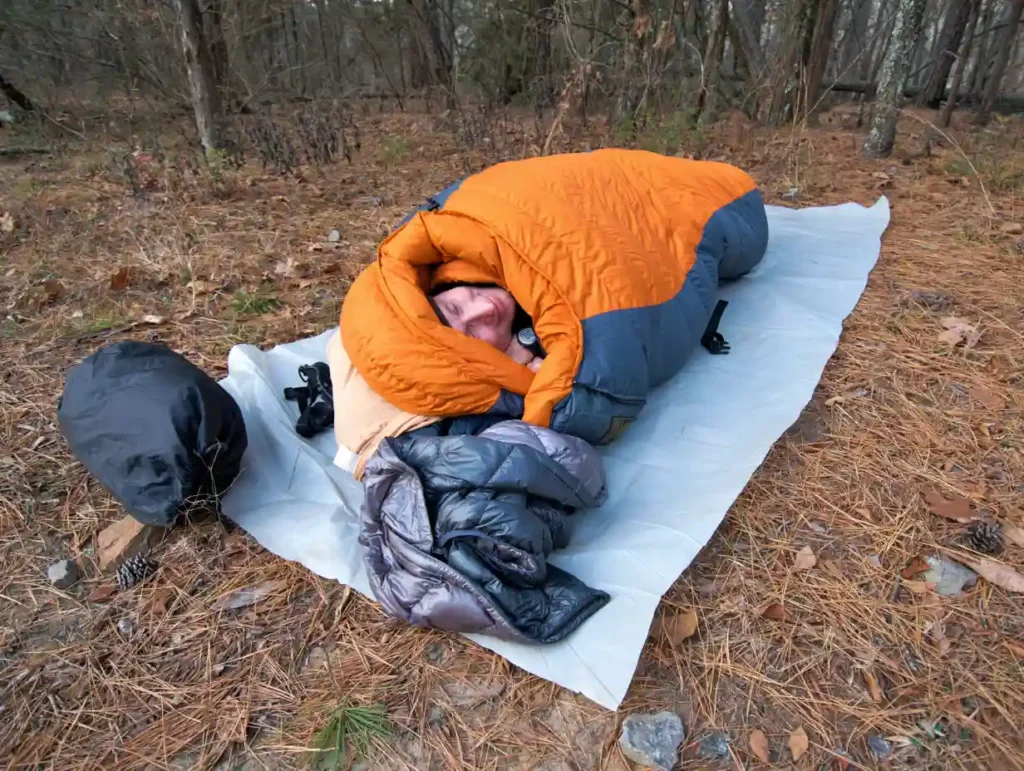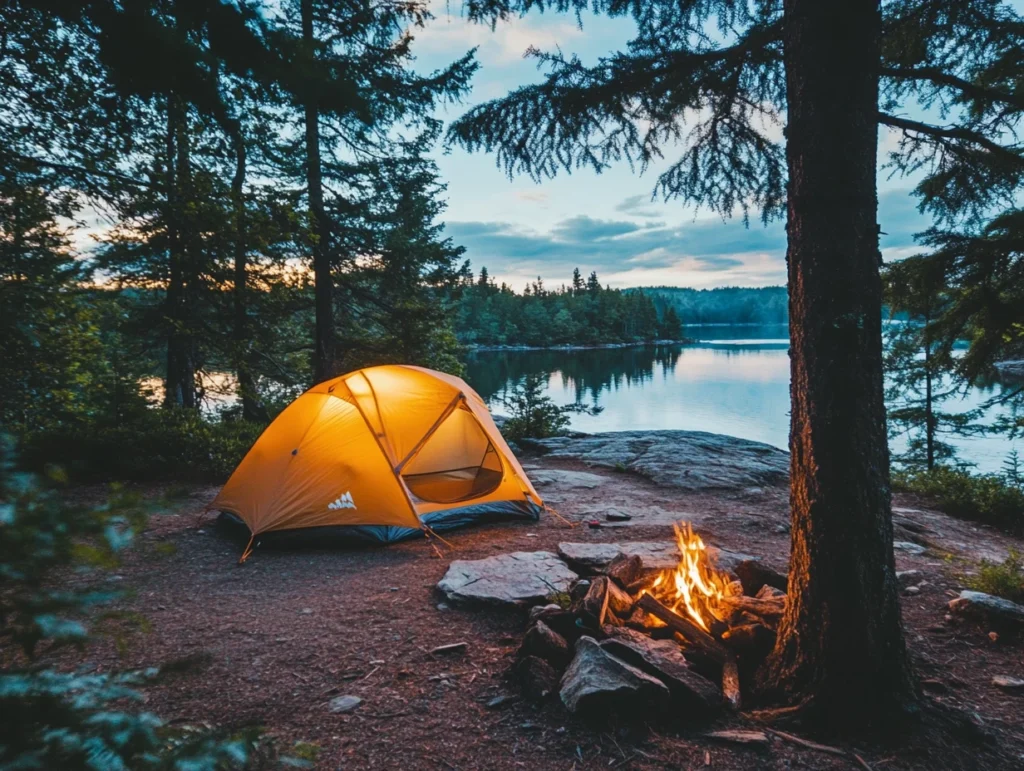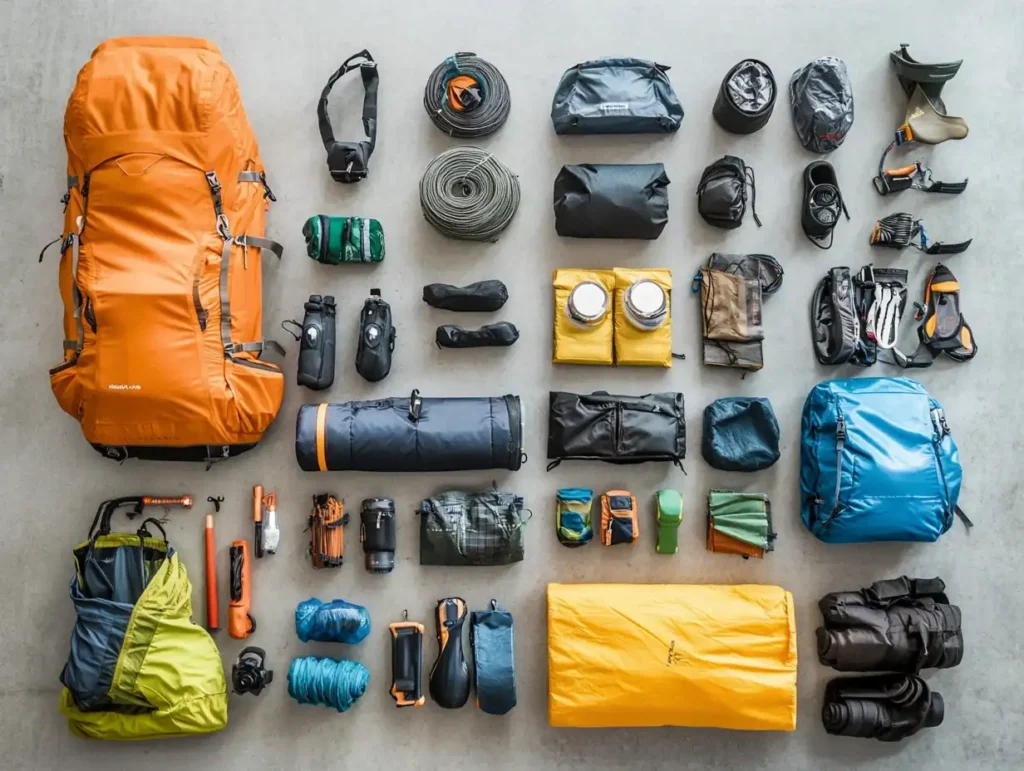Hello, fellow camper! I learned the hard way (in the army!) how crucial a good sleeping bag is for those nights under the stars.
Just as the sun dips and it starts getting nippy, having the right bag can mean the difference between waking up fresh or shivering your way through the night like a popsicle.
Want to jump straight in? Click the navigation links below to get to where you want to go!
Table of Contents
Top Picks for Different Camping Scenarios
Best Overall Camping Sleeping Bag
Best Budget Camping Sleeping Bag
Best Winter Camping Sleeping Bag
Best Double Sleeping Bag for Couples
Best Women’s-Specific Sleeping Bag
How to Choose the Right Sleeping Bag
Pairing Your Sleeping Bag with Other Gear
While giving these sleeping sacks a spin, we kept our eyes on things like how warm they keep you, the type of fluff inside, how heavy they are, and if you can squeeze them into your backpack.
Take the NEMO Jazz 30, for example. It’s like Goldilocks of sleeping temps — not too hot, not too cold (Gear Junkie).
We’ll have a proper look at what makes some bags stand out, like the Therm-a-Rest Questar 0F -18C, which holds its own in colder weather. And the Kelty Cosmic Down 20, which gives you bang for your buck without cutting corners.
I’ll spill the beans on fill power of down, like why the Montbell Down Hugger 650 #1 has backpackers with broad shoulders smiling ear to ear.
Also, I’ll share some secret tips for keeping your sleeping bag in great shape, and how to match it with other gear like sleeping pads. I’ll also talk about the weather and how that might change what you need.
By the time we’re done here, you’ll be set to snag the best sleeping bag for your camping escapades. Let’s get you snuggled up right!
How We Tested
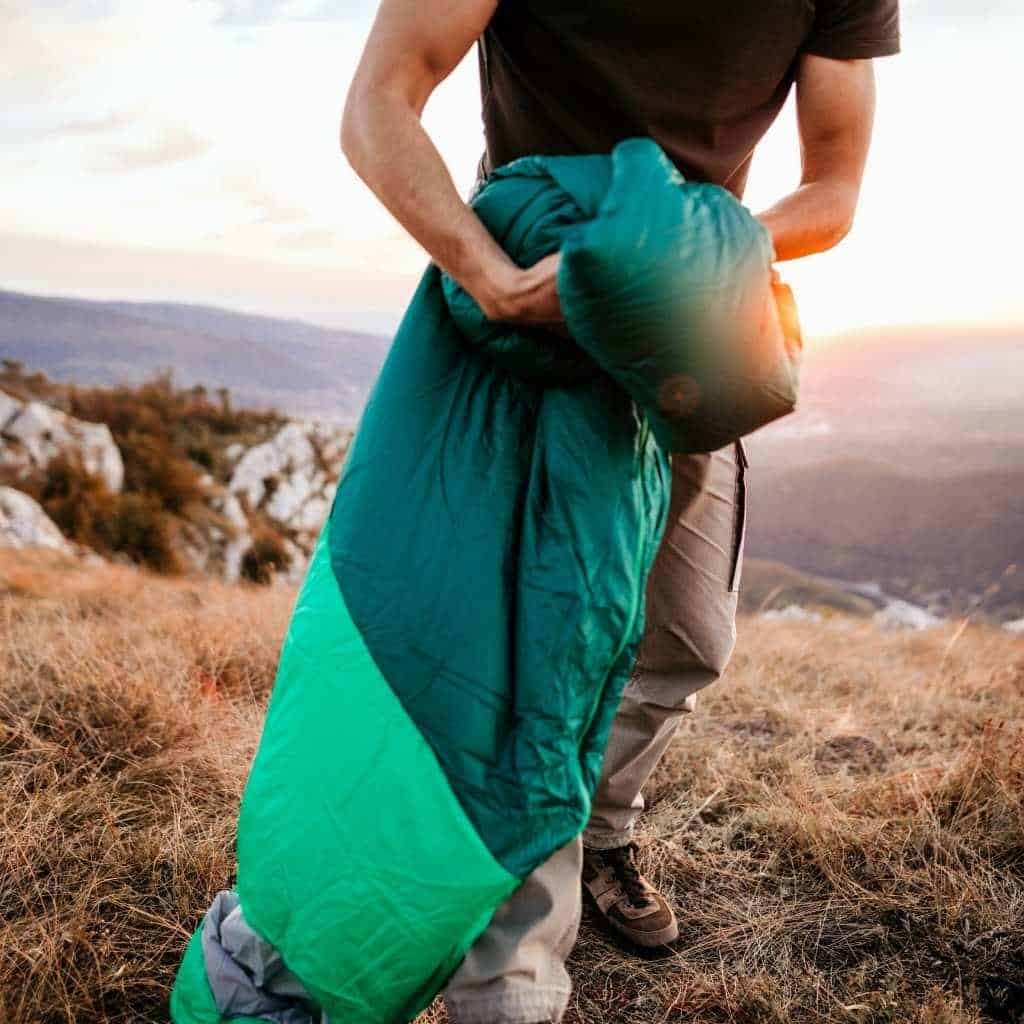
Finding the perfect camping sleeping bag means putting them through their paces to check for comfort, warmth, and durability. Here’s the scoop on how I got down and dirty with these sleeping bags to bring you the top picks.
Field Testing
I got cosy in each bag across a mix of outdoor getaways, trying to mimic the different kinds of camping you’d likely do. Here’s what went down:
- Temperatures: From sweaty summer sweatboxes to icy cold winter freeze-your-nose-off nights.
- Terrains: From fluffy, grass-covered fields to hard-as-rock, bumpy ground.
- Weather Conditions: Battled it all—clear starry nights, drizzly rain, and muggy, sticky weather.
Controlled Environment Testing
Besides roughing it outside, I took the party indoors with some controlled glares:
- Temperature Chambers: Played mad scientist to cook up some extreme weather or freeze-action and see who stood the heat and cold.
- Moisture Tests: Used these nifty checks to see if water just bounces off or if the bag turns into a soggy sponge.
- Compression Tests: Squeezed bags like your grandpa fluffing a pillow to check how well they smoosh and spring back to life.
Comfort Rating and Fit
Gave each bag a spin with different body types and sleep styles, keeping an eye on:
- Roominess: Making sure there’s room to wiggle and jiggle.
- Material Feel: Testing if it’s as cuddly as it looks and if it breathes nicely without rubbing you the wrong way.
- Insulation: Seeing how well warmth wraps around and if it sticks like a clingy ex.
|
Sleeping Bag Model |
Temperature Rating |
Weight |
Price USD/GBP |
|---|---|---|---|
|
0°F / -18°C |
9lbs 8oz/4.31kg |
£393 | |
|
20°F / -7°C |
2lbs 3oz/415g |
£159.95 | |
|
30°F / -2°C |
1lb 8oz/340g |
£569 | |
|
Western Mountaineering Kodiak MF |
0°F / -18°C |
2lbs 12oz/1.33kg |
$679/£648 |
|
20°F / -7°C |
9lbs 8oz/4.31kg |
£195 | |
|
Feathered Friends Flicker 40 UL |
40°F / 4°C |
8.4 oz / 238 g |
$469 |
|
Feathered Friends Egret UL 20 Women’s |
20°F / -6.67°C |
1lb 0.3oz/463 g |
$589 |
Durability and Build Quality
Went over each bag with a fine-tooth comb for build quality:
- Stitching: Hunted for loose threads like a neat-freak mum.
- Zippers: Tested them for smooth sailing, without any tantrums.
- Materials: Scrutinised the fabric and filling for quality and longevity.
Heat Retention
With the help of thermal cameras, I took some heat-snapping pics to check if each bag could hold onto warmth when it mattered most. Critical info for icy winter camping adventures.
Performance Metrics
Weighing up what each bag brought to the table:
- Warmth-to-Weight Ratio: Found the sweet spot between snug as a bug and a bag that doesn’t weigh a tonne.
- Packability: Saw if it shrunk down small enough to fit in your gran’s handbag.
- Ease of Use: Gauged how simple it was to zip in and out, and tweak any cords or toggles.
Real-World Feedback
Chatted with other campers and scoured the web for real-life opinions to give a properly-rounded view of how each bag gets on. Jump over to our best camping sleeping bags section for more lowdowns.
With all the scouting and testing done, I’ve laid out everything you need to know to pick the right bag for your next camp-out. Make sure to check out how to keep them fresh and clean with our tips on cleaning your sleeping bag after an adventure.
Types of Sleeping Bags
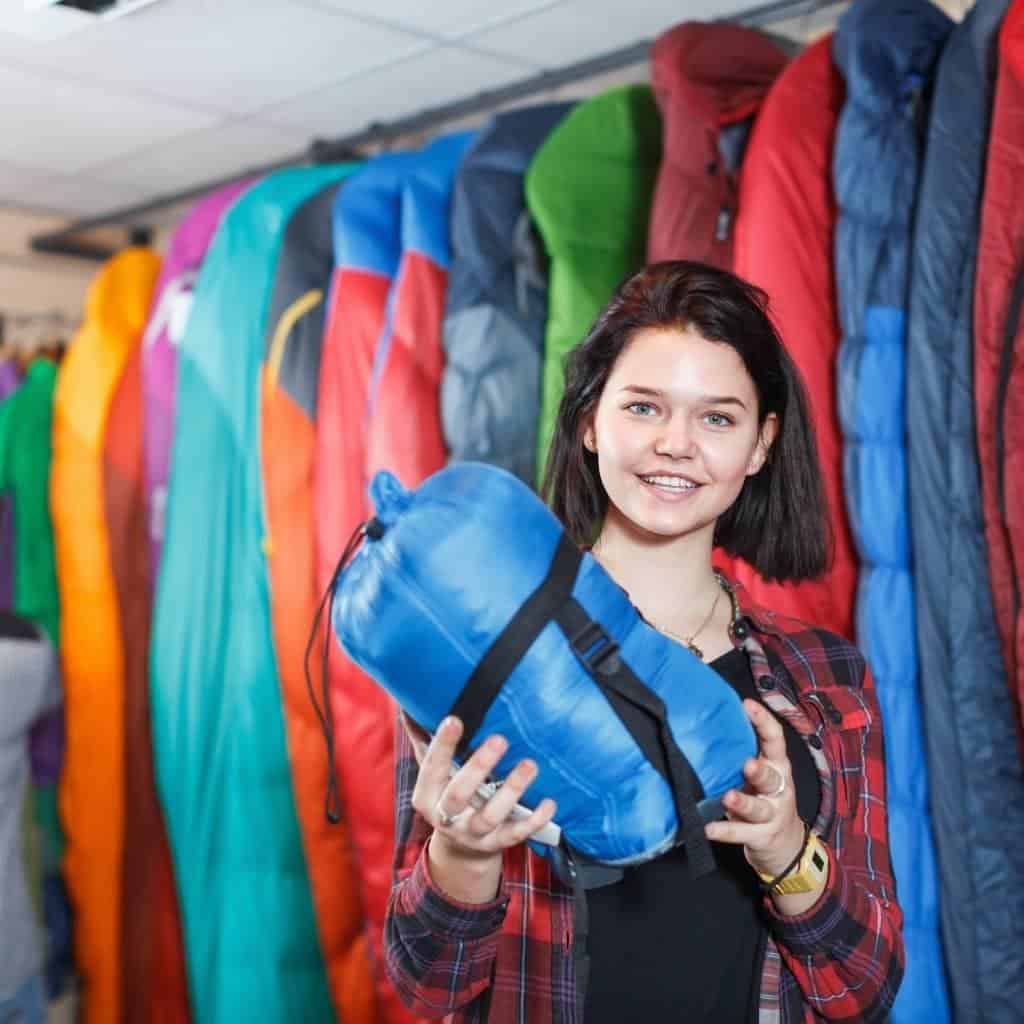
Picking the right sleeping bag for your camping trip can be the difference between a cosy night’s sleep and a chilly, restless one. Let me break down the different types of sleeping bags out there so you can nab the one that’ll have you snoozing soundly under the stars.
Rectangular Sleeping Bags
If you love having space to stretch your legs at night, rectangular sleeping bags are your buddy. They’re a favourite for car camping or family outings, and you get enough wiggle room to practice those midnight starfish positions.
Pros:
- Loads of room to move
- Can zip together with another for double fun
Cons:
- Bulky and not the best at keeping you warm
- Heavy to lug around
Mummy Shaped Sleeping Bags
For those frosty nights or when you’re hiking miles into the wilderness, mummy sleeping bags are the way to go. They hug you tight, from shoulders to toes, keeping you snug and toasty.
Pros:
- Great for heat retention
- Light and less space to carry
Cons:
- Makes you feel like a wrapped-up burrito
- Not much room for tossing and turning
Semi-Rectangular Sleeping Bags
Think of these as the best of both worlds—somewhere between the sprawling space of a rectangular bag and the warmth of a mummy bag. They work well when you need space without sacrificing too much warmth.
Pros:
- Roomy yet cosy
- Good for various weather conditions
Cons:
- Not the warmest in the bitter cold
- A tad bulkier than mummy bags
Double Sleeping Bags
Perfect for lovebirds or those who just can’t sleep solo, double sleeping bags have got your back. They’re spacious for two and have handy zippers on both sides.
Pros:
- Space galore for two
- More wriggle room for each person
Cons:
- Big and bulky to carry
- Not as heat-efficient as single bags
Women’s-Specific Sleeping Bags
These bags are like the ones designed just for the gals, with a little extra padding where it counts, particularly around the feet and torso.
Pros:
- Fits the female form better
- Extra warmth where needed
Cons:
- Not as adaptable for anyone else
- Can be slightly heavier due to the extra padding
Down vs Synthetic Sleeping Bags
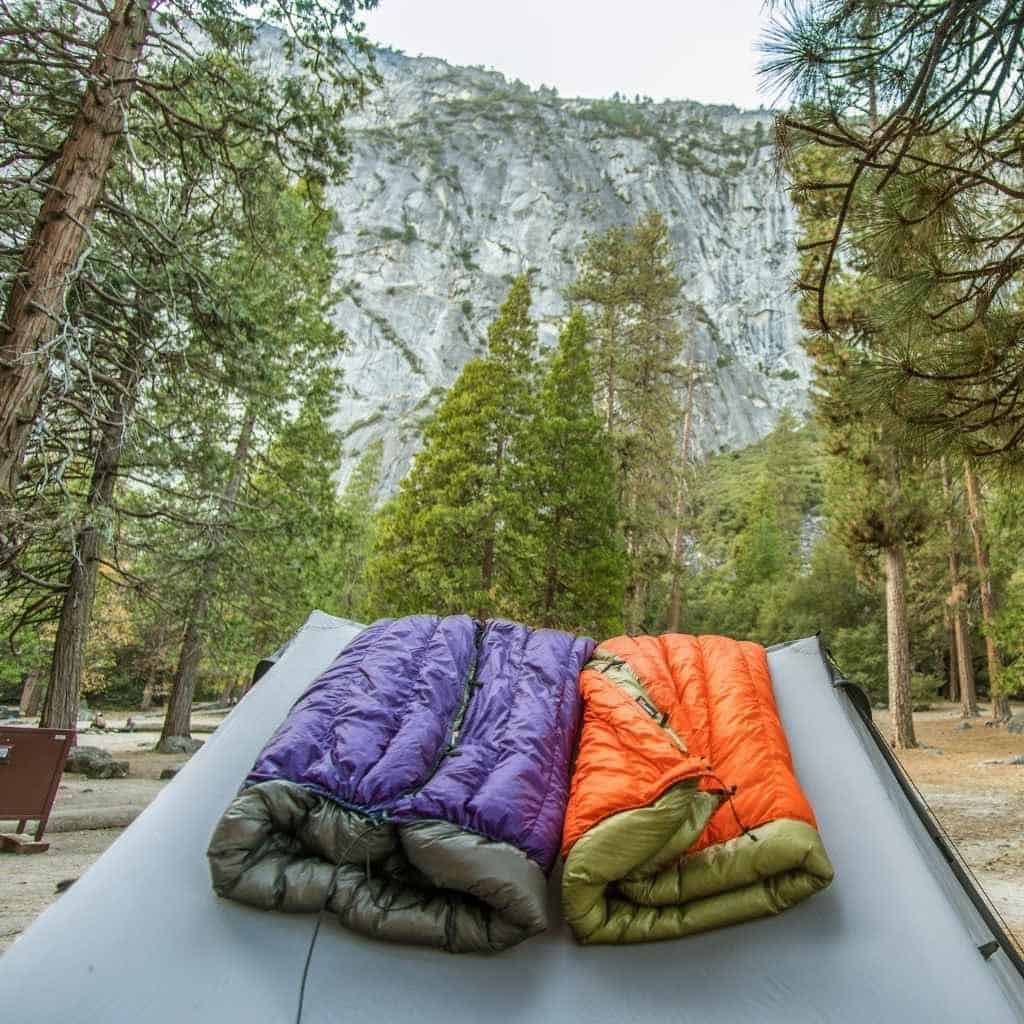
Insulation type is key to enjoying a good night’s sleep. You typically have two choices: down and synthetic.
|
Insulation Type |
Characteristics |
|---|---|
|
Down |
Lightweight and easy to pack, great for cold and dry conditions. Top pick for serious backpackers. |
|
Synthetic |
Keeps you warm even when wet, and is better for soggy settings. Usually kinder on the wallet. |
For handy tips on picking out a sleeping bag that’s just right, check out our guide on how to choose a sleeping bag for camping.
Key Features to Consider
There are a few essentials to weigh when you’re after that perfect camping sleeping bag:
- Temperature Rating: Get a bag that can handle the coldest nights you expect.
- Weight and Packability: Must-have for trekking and lightweight camping.
- Durability: Make sure it can stand a battering in the great outdoors.
- Water Resistance: Go for hydrophobic down or synthetic fill if things might be damp.
Nailing the right sleeping bag is a game-changer for your camping shindig. So, arm yourself with a bit of knowledge and pick the one that suits your adventure! We’ve got detailed recommendations and reviews in our articles on the best sleeping bags for camping and best double sleeping bags for camping.
Top Picks for Different Camping Scenarios
Choosing the best camp sleeping bag can make or break your camping trip. Let me share my favourite picks for various camping situations to help you cuddle up comfortably under the stars.
Best Overall Camping Sleeping Bag
Therm-a-Rest Questar 0F / -18C
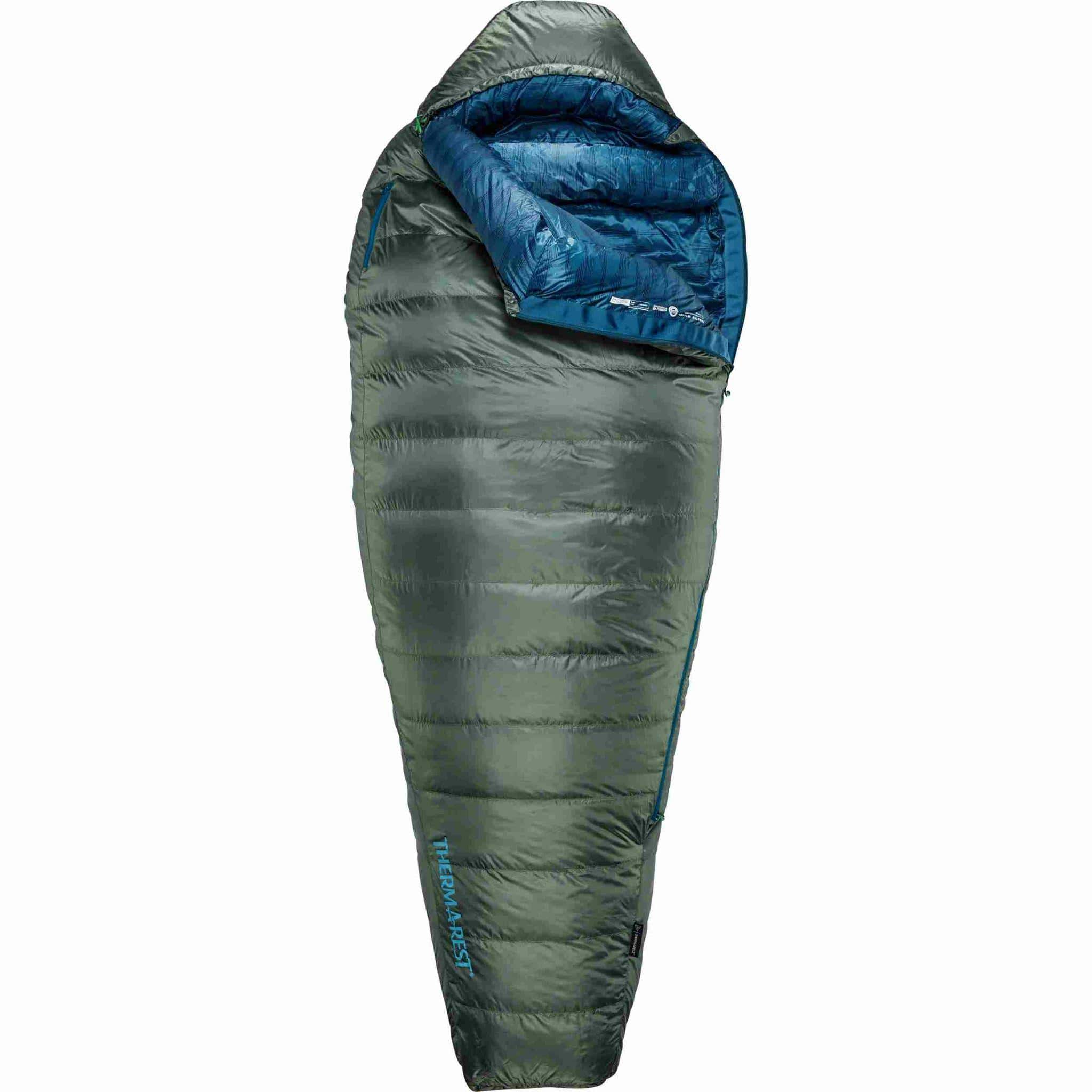
My top choice overall has to be the Therm-a-Rest Questar 0F -18C. It’s like a warm hug on a cold night. Its impressive temperature rating suits many camping adventures.
Thanks to the 900-fill Nikwax Hydrophobic Down, it keeps moisture at bay and dries fast. The clever zoned insulation keeps things warm without adding weight. Whether you’re chilling on a mountain or snoozing by a lake, this one’s got your back.
|
Feature |
Description |
|---|---|
|
Insulation |
900-fill Nikwax Hydrophobic Down |
|
Rating |
0°F / -18°C |
|
Weight |
9lbs 8oz/4.31kg (Regular) |
|
Price |
£393 |
Best Budget Camping Sleeping Bag
Kelty Cosmic Down 20
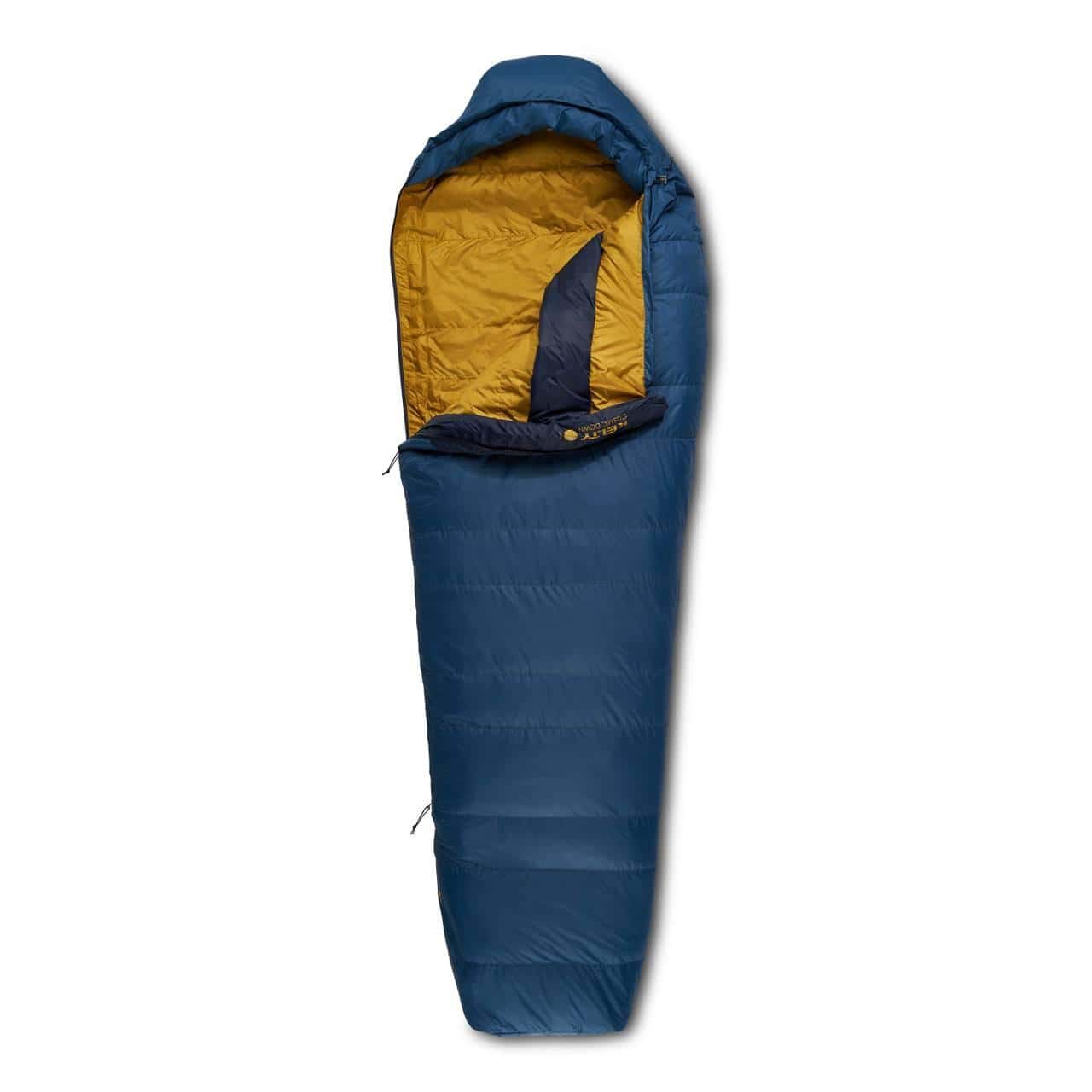
Now, if you’re pinching pennies or just camp here and there, the Kelty Cosmic Down 20 is a cracker. It strikes a lovely balance between cost and quality, with cosy 600-fill DriDown insulation that shrugs off a bit of dampness. This one’s a trusty three-season companion.
|
Feature |
Description |
|---|---|
|
Insulation |
550-fill Down |
|
Rating |
20°F / -7°C |
|
Weight |
2lbs 3oz/415g (Regular) |
|
Price |
£159.95 |
Best Backpacking Sleeping Bag
Western Mountaineering MegaLite
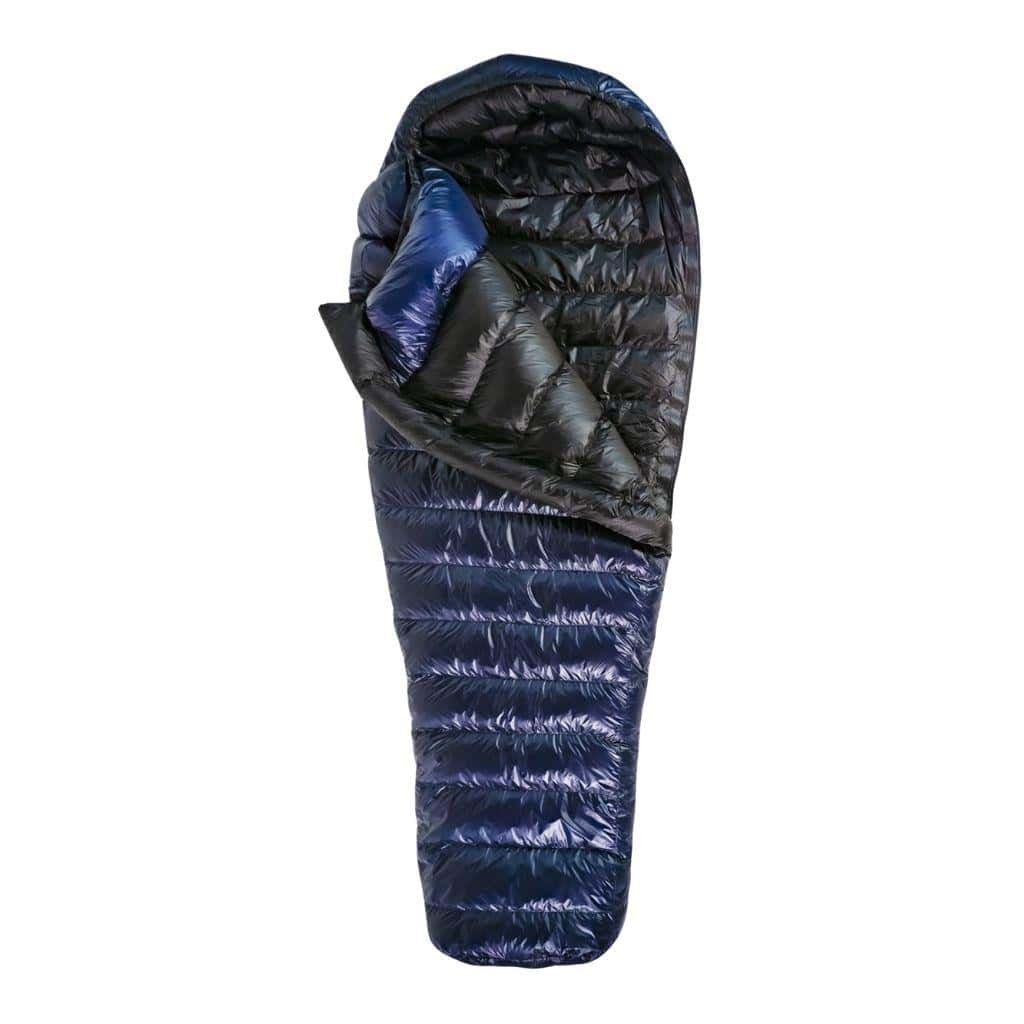
For those who love hitting the trail, the Western Mountaineering MegaLite is a winner. This bag is all about warmth, lightweight, and easy packing. With its 850+ fill power down, it keeps you toasty without weighing you down.
|
Feature |
Description |
|---|---|
|
Insulation |
850+ fill power down |
|
Rating |
30°F / -2°C |
|
Weight |
1lb 8oz/340g (Regular) |
|
Price |
£569 |
Best Winter Camping Sleeping Bag
Western Mountaineering Kodiak MF
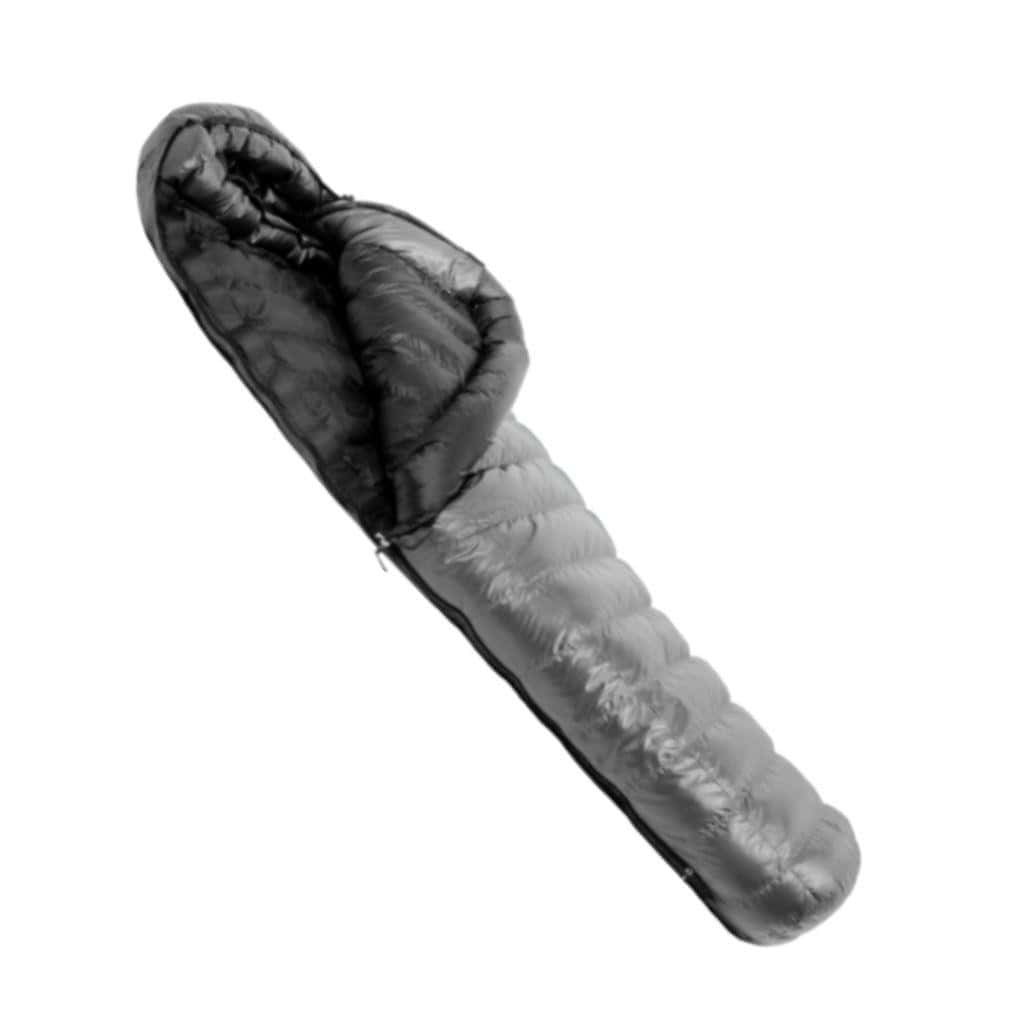
Winter camping got you shivering? The Western Mountaineering Kodiak MF is here to save the day. It’s your go-to for the biting cold, with 850+ fill power down wrapped in weather-resistant MicroLite XP fabric. Stay snug and breathe easy, even when it’s brass monkeys!
|
Feature |
Description |
|---|---|
|
Insulation |
850+ fill power down |
|
Rating |
0°F / -18°C |
|
Weight |
2lbs 12oz/1.33kg (Regular) |
|
Price |
$885 |
Best Double Sleeping Bag for Couples
Kelty TruComfort 20 Doublewide
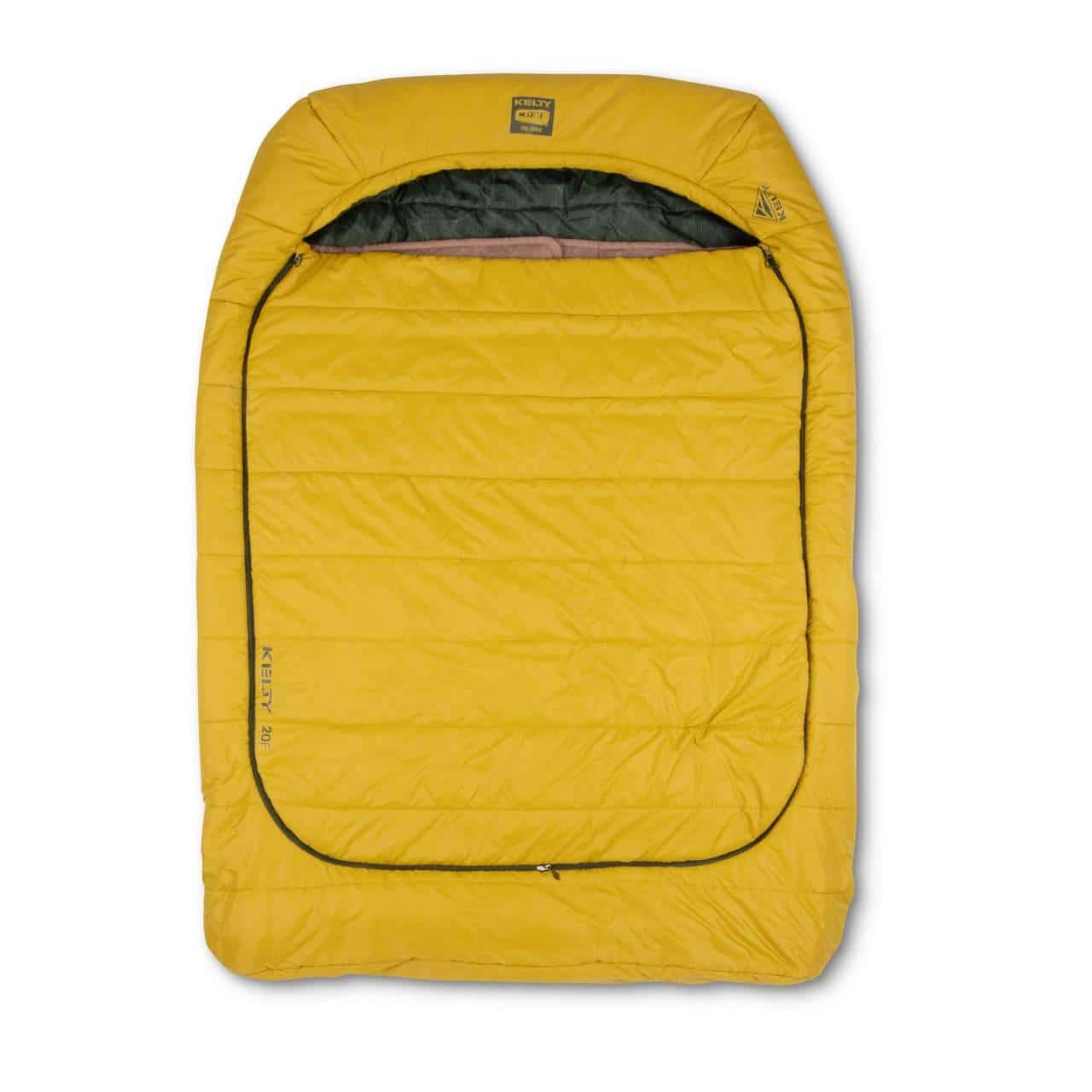
Cosying up with a partner? The Kelty TruComfort 20 Doublewide’s your ticket. Roomy and comfy for two, it boasts dual insulation layers and individual foot vents for temperature tweaks. Pair it with a double sleeping pad for ultimate snugness.
|
Feature |
Description |
|---|---|
|
Insulation |
CloudLoft synthetic |
|
Rating |
20°F / -7°C |
|
Weight |
9lbs 8oz/4.31kg |
|
Price |
£195 |
Best Ultralight Sleeping Bag
Feathered Friends Flicker 40 UL
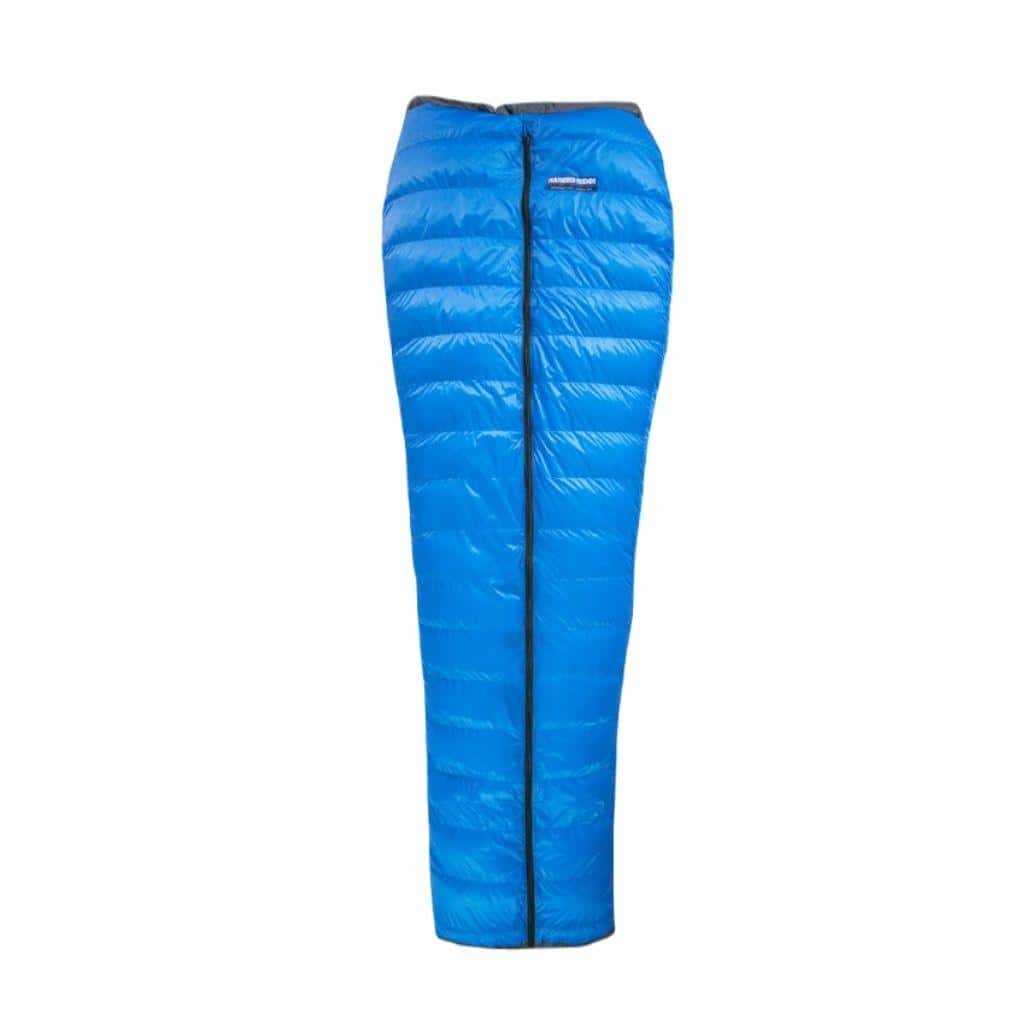
For the minimalist in you, the Feathered Friends Flicker 40 UL ticks all the boxes. Use it as a quilt or a regular sleeping bag; it’s super versatile with a 950+ fill power down to keep you toasty without the bulk.
|
Feature |
Description |
|---|---|
|
Insulation |
950+ fill power down |
|
Rating |
40°F / 4°C |
|
Weight |
8.4 oz / 238 g |
|
Price |
$469 |
Best Women’s-Specific Sleeping Bag
Feathered Friends Egret UL 20 Women’s
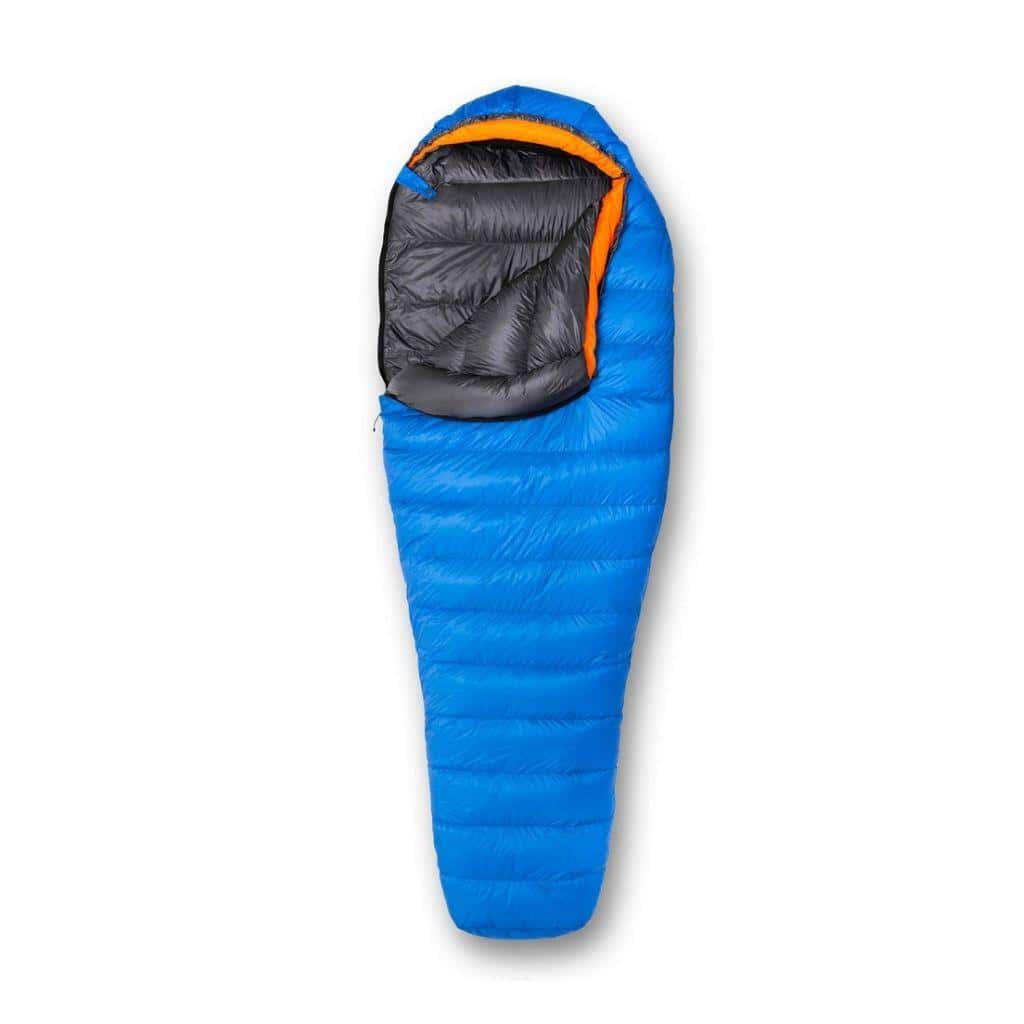
Ladies, the Feathered Friends Egret UL 20 is made just for you. Its 950+ fill power down keeps you warm, with extra padding where you need it most, at the feet and torso. It’s designed with women in mind for a cosy night’s sleep.
|
Feature |
Description |
|---|---|
|
Insulation |
950+ fill power down |
|
Rating |
20°F / -6.67°C |
|
Weight |
1lb 0.3oz/463 g |
|
Price |
$589 |
Want more tips? Pop over to our guide on how to pick the best sleeping bag for camping. Or, if you’re watching your wallet, have a peek at our list of best budget sleeping bags.
How to Choose the Right Sleeping Bag
Settling on the perfect sleeping bag can either give you sweet, dreamy nights or turn them into sleepless calamities. So, here’s my take on how to pick just the right one to snug up in under the stars.
Temperature Rating
This number spells out the chilliest night your sleeping bag can handle while keeping you toasty. Wanna be snug on those cool nights out? Look for one that matches the weather when you’re out there roughing it.
Usually, a 20°F (-6°C) temperature will do the job for most of the year. Winters being beastly, you might want a 0°F (-18°C) or even a cosier bag. For more chilly choices, have a peek at our best sleeping bags for camping cold weather.
Weight and Packability
Hikers and backpackers, listen up! You’ll want something that won’t break your back. The lighter, the better. Something like the Feathered Friends Swallow YF 20 can keep you warm without making you huff and puff. But if you’re car camping, feel free to go plush and luxurious.
Insulation Type
Do you opt for downy fluff or man-made fibre? Here’s a quick run-down:
|
Insulation |
The Low-Down |
What’s Great |
Not So Great |
|---|---|---|---|
|
Down |
Feather-friendsy fill |
Super light, smooshable, stays warm |
Spendy, sags when wet |
|
Synthetic |
Fibres from the lab |
Wallet-friendly, warms even if soggy |
Bulkier, heavier |
Pick based on where you’ll be snuggling down. If you’re heading into the wild or wet zones, maybe synthetic is your pal.
Shape and Fit
Like a snug cocoon or a liberty-flavoured duvet? Mummy bags hug tight, keeping warmth locked in, great for frosty escapades. Rectangular ones? They’re like sleeping on a cloud, perfect if you need to toss and turn or casually camp in your car.
Take the REI Co-op’s Siesta Hooded 20, it’s got cosy and warmth all figured out—one of the best sleeping bags for camping out there.
Extra Perks
Little add-ons can make camping less of a challenge and more of an adventure:
- Hood: Keeps your head warm and toasty.
- Draft Collar: Stops that sneaky cold from creeping in.
- Zippers: Two-way zips are your friend; they let in the breeze when needed.
Budget
Mind your wallet, too—you don’t need to splurge for a comfy sleep. High-ticket ones like the NEMO Jazz 30 are dreamy, but if you’re counting pennies, the Kelty Cosmic Down 20’s a winner for the price (Gear Junkie).
Want more? Have a look at our special guides for the best sleeping bag for wild camping or if Jack Frost’s coming to town, the best sleeping bag for winter camping.
Picking the best bag boils down to what you need, where you’re headed, and your piggy bank. Now, off you go and happy snoozing!
Care and Maintenance Tips
Let’s dish out some wisdom on keeping my trusty camp sleeping bag in mint condition, ensuring it sticks around for many adventures.
Cleaning My Sleeping Bag
A regular clean-up stops grime and my own body oils from messing with the bag’s insulation. Here’s my cleaning ritual:
- Spot Clean: I usually tackle small stains and spills with a damp cloth and gentle soap. This nips minor mishaps in the bud.
- Full Wash: For those times, my bag needs a thorough clean:
- I toss it in a front-loader with a gentle cycle.
- I use a special cleaner made for down or synthetic fabric.
- Rinse super well to banish any leftover suds.
- Either air-dry it or pop it in the dryer on low, throwing in a few clean tennis balls to keep it fluffy.
Want more detailed steps? Check out how to clean a sleeping bag after camping.
Storing My Sleeping Bag
Good storage habits can seriously help my sleeping bag live longer. I never leave it squished for ages. Instead:
- Hang Dry: Post-adventure, I air it out by hanging it up.
- Storage Bag: I tuck it away in a roomy cotton or mesh bag, not its stuff or compression sack.
|
Storage Style |
What’s the Deal? |
|---|---|
|
Hanging |
Chill it in a cool, dry spot. |
|
Storage Bag |
Keep it in a roomy, breathable bag. |
Repairing My Sleeping Bag
Small tears and deflated spots are like a rite of passage for my bag, but I tackle them head-on:
- Patching Tears: I use repair kits specific for sleeping bags to fix minor rips quickly.
- Restoring Loft: Every now and then, I run my down bag through the dryer with clean tennis balls to perk it up.
Additional Care Tips
Maintaining my sleeping bag’s mojo, I throw in some extra love:
- Dry Fully Before Storing: Moist equals mildew, so I make sure my bag’s bone dry before shelving it.
- Stay Shady: Sunbathing can ruin the fabric, so I dry it in the shade.
- Bag Liner Love: A liner keeps my bag’s insides cleaner, meaning fewer washes.
For extra advice, I dive into how to choose a sleeping bag for camping and how to stay warm camping without a sleeping bag.
With these tips, my sleeping bag’s ready to cosy up on every trip, offering warmth and comfort wherever I roam.
Environmental Considerations
When I’m hanging out in the great outdoors, picking the best camp sleeping bag is a big deal—not just for keeping me snug but also for Mother Nature. Here are some things to think about when you’re hunting for your next sleeping buddy.
Green Gear
Choosing sleeping bags crafted from earth-friendly stuff helps keep my eco impact on the low. Loads of companies now churn out green options, using recycled shells and ethically-sourced down. Sure, synthetic insulation might save you a few quid at the checkout, but it’s usually harsher on the planet since it comes from oil-based products and bites the dust sooner.
Stamps of Approval
Every little stamp or badge can guide me toward more sustainable sleeping choices. Check out:
- Bluesign®: Makes sure no nasties are hanging around in the textile process for the earth, workers, and us folks.
- Responsible Down Standard (RDS): Guarantees that the feathers aren’t plucked from unhappy ducks and geese.
Insulation Choices and Their Footprint
The fluff inside the sleeping bag matters, too:
- Down Insulation: It breaks down naturally and can be renewed, especially if sourced the right way. Advances in water-repelling down now mean it’s more durable against dampness, drying quickly and sopping up less rain (Therm-a-Rest).
- Synthetic Insulation: Comes from non-renewable stuff and might need replacing more regularly due to wear and tear.
Bidding Farewell
When the sleeping bag’s snooze time is over, it helps to know what to do next:
- Recycling Programmes: Some brands let you send old gear off to be revamped or recycled.
- Donations: If your bag’s still got life, passing it on to camps or shelters can give it a second go.
|
Insulation Type |
Lifespan |
Eco-Friendliness |
|---|---|---|
|
Down |
Longer |
Biodegradable and renewable if sourced right |
|
Synthetic |
Shorter |
Often stacks up with oil-based components |
Powering Up
Making sleeping bags eats up a fair chunk of energy. Supporting brands that are upfront about their energy habits, especially those going green or renewable, is my way of backing better choices.
Waste Not, Want Not
To cut down on waste, go for robust, long-lasting sleeping bags that’ll stick around for the ride. Plus, picking an all-weather bag can help dodge the need for a more crowded gear closet.
Thinking through all of this, I can pick the best sleeping bag for camping that vibes with my eco vibes. It’s about making sure my passion for the great outdoors doesn’t crash into the lovely land I cherish.
Pairing Your Sleeping Bag with Other Gear
When I’m packing for a camping adventure, finding the comfiest camp sleeping bag is just the start of my cosy night under the stars. Teaming it up with the right gear is key to sleeping like a baby and making sure the trip is a blast.
Here’s what I put in my kit to make my camping nights snug and full of fun.
Sleeping Pads
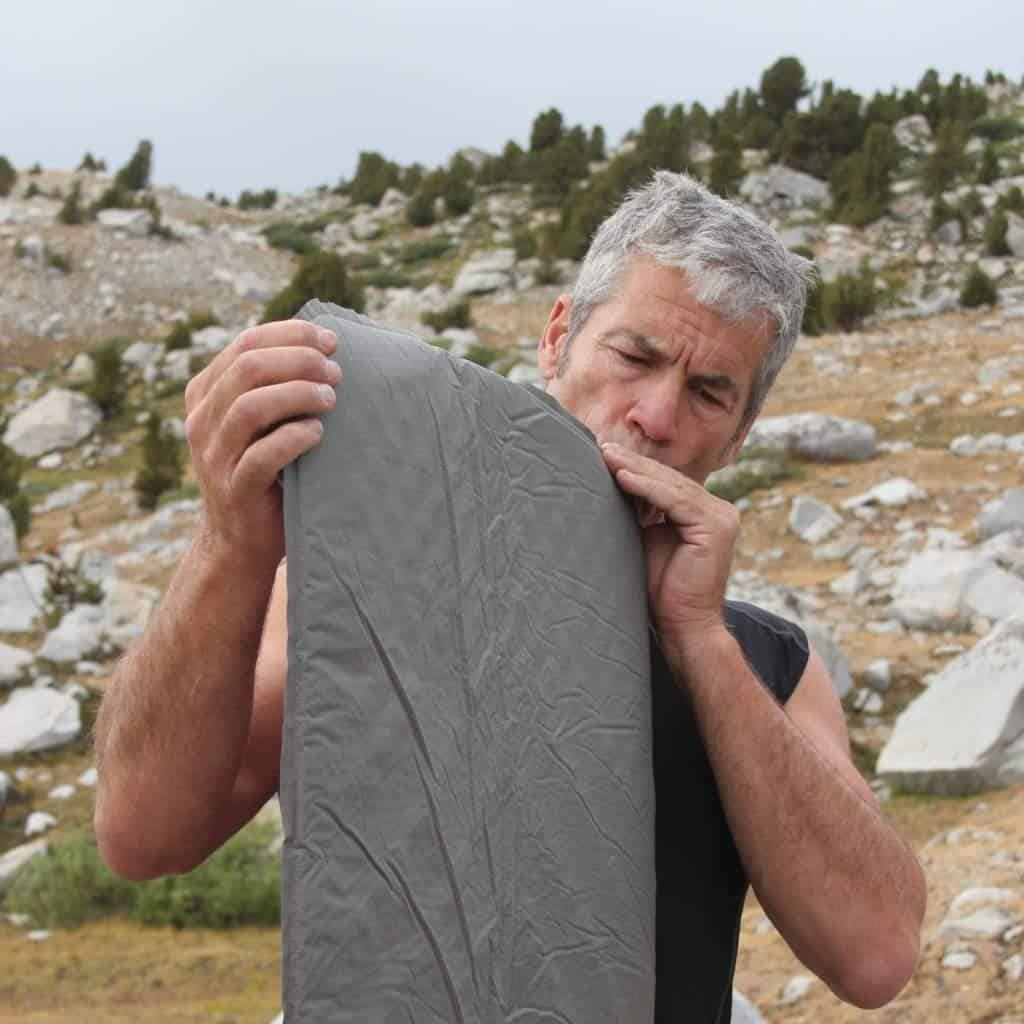
Think of a sleeping pad as your trusty sidekick against cold, hard ground. A pad insulates you from the ground, and you’ll notice the difference without one.
It lifts you off the chilly dirt and boosts your warmth and comfort. There are three main pad types to choose from: self-inflating, air pads, and closed-cell foam pads.
Self-inflating pads hit the sweet spot between comfort and ease, but they’re a bit on the heavy side. Air pads are featherlight and tiny when packed, but yes, you have to blow them up. Closed-cell foam pads are tough and budget-friendly but kinda clumsy to lug around.
|
Type of Pad |
Pros |
Cons |
|---|---|---|
|
Self-Inflating |
Plush, simple setup |
Hefty, space-hogging |
|
Air Pads |
Super light, small footprint |
Needs puffing, prone to holes |
|
Closed-Cell Foam Pads |
Tough cookie, gentle on the wallet |
Big and less comfy |
Pillows
Some folks might skip pillows, but trust me, a camping pillow can change your sleep game. Inflatable ones are light and easy to pack—just right for trekking folk. Compressible pillows, stuffed with foam or fluffy down, spoil you with cosiness, but they’ll demand more room in your backpack.
Sleeping Bag Liners
Throwing in a sleeping bag liner not only keeps your bag spick and span but also adds a cosy touch of warmth. You can grab liners in various materials like soft cotton, sleek silk, or synthetic stuff. They’re simple to wash, making your sleeping bag last longer.
|
Material |
Warmth |
Weight |
Packability |
|---|---|---|---|
|
Cotton |
Decent |
Quite heavy |
Not so compact |
|
Silk |
Toasty |
Featherweight |
Perfect for packing |
|
Synthetic |
Pretty warm |
Average |
Easy to stash |
Insulated Water Bottles
Pop a warm bottle inside your sleeping bag – it’s like your own little heater. Refill it with hot water before bed, and it pulls double duty as extra toastiness. This trick is gold in nippy weather where every bit of heat counts.
Tent
Choosing the right tent to go with your sleeping bag is a biggie for staying warm and dry. A three-season tent is usually enough for most trips, but when Jack Frost’s around, go for a four-season tent. It really impacts how snug and breathable your night’s sleep is.
Ground Tarps and Footprints
Laying down a ground tarp or footprint under your tent stops wear and tear and blocks dampness. It adds an extra warmth boost and keeps your sleeping corner dry.
Choosing the Right Insulation
Sleeping bags are stuffed with either down or synthetic. Down is light, packs down small, and is super warm, but it can be pricey. Synthetic’s usually cheaper and loves to stay warm, even when it gets soggy.
|
Fill Type |
Warmth |
Weight |
Compressibility |
Cost |
|---|---|---|---|---|
|
Down |
Toasty |
Super light |
Packs tiny |
High price tag |
|
Synthetic |
Medium warmth |
Moderate weight |
Bulky pack size |
Budget-friendly |
When getting ready to camp, remember to pair your comfy camp sleeping bag with these must-have pieces of kit for a warm and pleasant slumber. Plan with the weather and your sleep style in mind. See our tips on best lightweight camping sleeping bags and best sleeping bags for winter adventures for more comfortable ideas.
Conclusion
Picking the right camp sleeping bag boils down to pairing your camping method with the features that’ll keep you snug. I’ve shared my top choices for different camping vibes, and each bag has its own charm.
Quick Reference Table
|
Scenario |
Sleeping Bag |
What’s Good |
Weight |
Price |
|---|---|---|---|---|
|
Best Overall Camping Sleeping Bag |
Versatile for different temperatures |
9lbs 8oz/4.31kg |
£393 | |
|
Best Budget Camping Sleeping Bag |
Kelty Cosmic Down 20 |
Gets you quality without breaking the bank |
2lbs 3oz/415g |
£159.95 |
|
Best Backpacking Sleeping Bag |
Western Mountaineering MegaLite |
Brings warmth yet packs light |
1lb 8oz/340g |
£569 |
|
Best Winter Camping Sleeping Bag |
Western Mountaineering Kodiak MF |
Built for those bone-chilling nights |
2lbs 12oz/1.33kg |
$679/£648 |
|
Best Double Sleeping Bag for Couples |
Kelty TruComfort 20 Doublewide |
Perfect for couples who like to get cosy |
9lbs 8oz/4.31kg |
£195 |
|
Best Ultralight Sleeping Bag |
Feathered Friends Flicker 40 UL |
For the minimalist wanderers |
8.4 oz / 238 g |
$469 |
|
Best Women’s-Specific Sleeping Bag |
Feathered Friends Egret UL 20 Women’s |
Made for women who sleep colder than men, with top insulation and comfort |
1lb 0.3oz/463 g |
$589 |
For the ultimate camping sleeping bag, the REI Co-op’s Siesta Hooded 20 brings comfort, warmth, and cool features without emptying your wallet.
Budget-conscious folks will appreciate Kelty Cosmic Down 20, which nails the sweet spot between price and performance. If weights are a problem, backpackers might lean towards the Western Mountaineering MegaLite for its lightness and heat-trapping abilities.
Chilling in the snow? The Western Mountaineering Kodiak MF is your best friend against the cold. Lovebirds can snuggle in the spacious Kelty TruComfort 20 Doublewide. Fans of less-is-more will dig the Feathered Friends Flicker 40 UL, and women can delight in the tailored cosiness of the Feathered Friends Egret UL 20 Women’s.
Check out our deep dives on topics like how to choose a camping sleeping bag and top picks for cold weather sleeping bags if you want more details. Each option brings something special, helping you snag the best sleeping bag for your camping adventures.
And don’t skimp on the upkeep. Peek at our pointers on cleaning your sleeping bag post-camping to keep your gear fresh. Happy trails!
FAQs
What is the best camp sleeping bag?
The best camp sleeping bag depends on what you like. It should fit your needs, whether you’re camping in the winter or summer, and how warm you want to be at night. The Therm-a-Rest Questar 0F -18C keeps popping up as the top choice thanks to its versatility—it’s a snug fit for most camping trips.
Should I choose a down or synthetic sleeping bag?
Down’s your friend for cold, dry outings, while synthetic’s got your back even when things get a bit damp (REI). Weigh the weather and location of your camping trips when picking between the two.
How do I understand sleeping bag temperature ratings?
Figuring out sleeping bag temperature ratings is a must for staying cosy, no matter the weather. Always grab a bag that’s rated for the chilliest temps you’re likely to face (REI).
What’s the difference between camping and backpacking sleeping bags?
Camping bags are about comfort, like having your own bed outside. Backpacking bags are made to be light, warm, and easy to put in your pack. For a backpacking adventure, the Western Mountaineering MegaLite is a real winner.
Can couples use a single sleeping bag?
Absolutely, two-person sleeping bags are made for cosy nights under the stars with your partner. The Kelty TruComfort 20 Doublewide is a crowd fave for couple campers.
What’s the best budget option?
Look no further than the Kelty Cosmic Down 20 for those keeping an eye on their wallet but not skimping on quality.
How should I choose a sleeping bag for winter camping?
When the frost is biting, you’ll want a bag built for serious chills. The Western Mountaineering Kodiak MF is highly regarded for its ability to tackle harsh winter conditions.
Is there a good option for ultralight camping?
For the ultralight champs and minimalist trekkers, the Feathered Friends Flicker 40 UL is the standout pick, keeping your pack feather-light.
Are there sleeping bags specifically for women?
You bet, women-specific sleeping bags are designed with better warmth and comfort fit for women. The Feathered Friends Egret UL 20 Women’s is highly praised in this selection.
What should I consider when buying a sleeping bag for camping?
When snagging a sleeping bag, think about things like the temperature rating, the kind of insulation, how much it weighs, and how easily you can pack it away. For all the nuts and bolts, swing by our detailed guide on how to choose a sleeping bag for camping.
How do I care for and maintain my sleeping bag?
Keeping your sleeping bag in top-notch shape involves regular cleaning and storing it right. For handy tips, peek at our piece on how to clean a sleeping bag after camping.
Read our articles on the best camping sleeping bags and the best sleeping bag for winter camping to learn about different sleeping bags.

